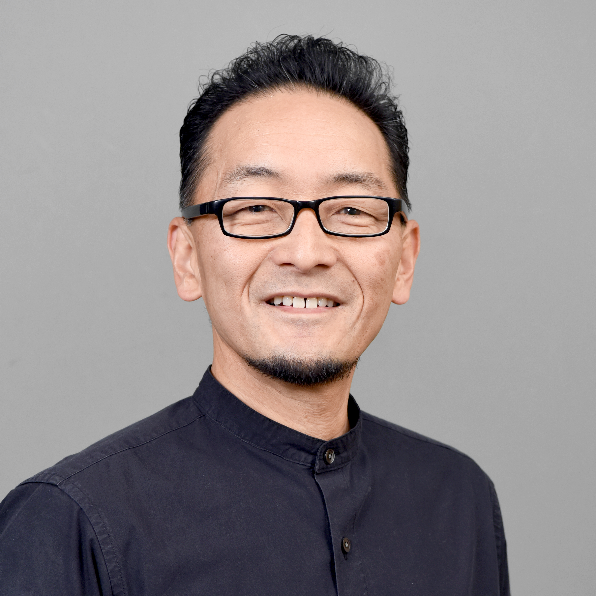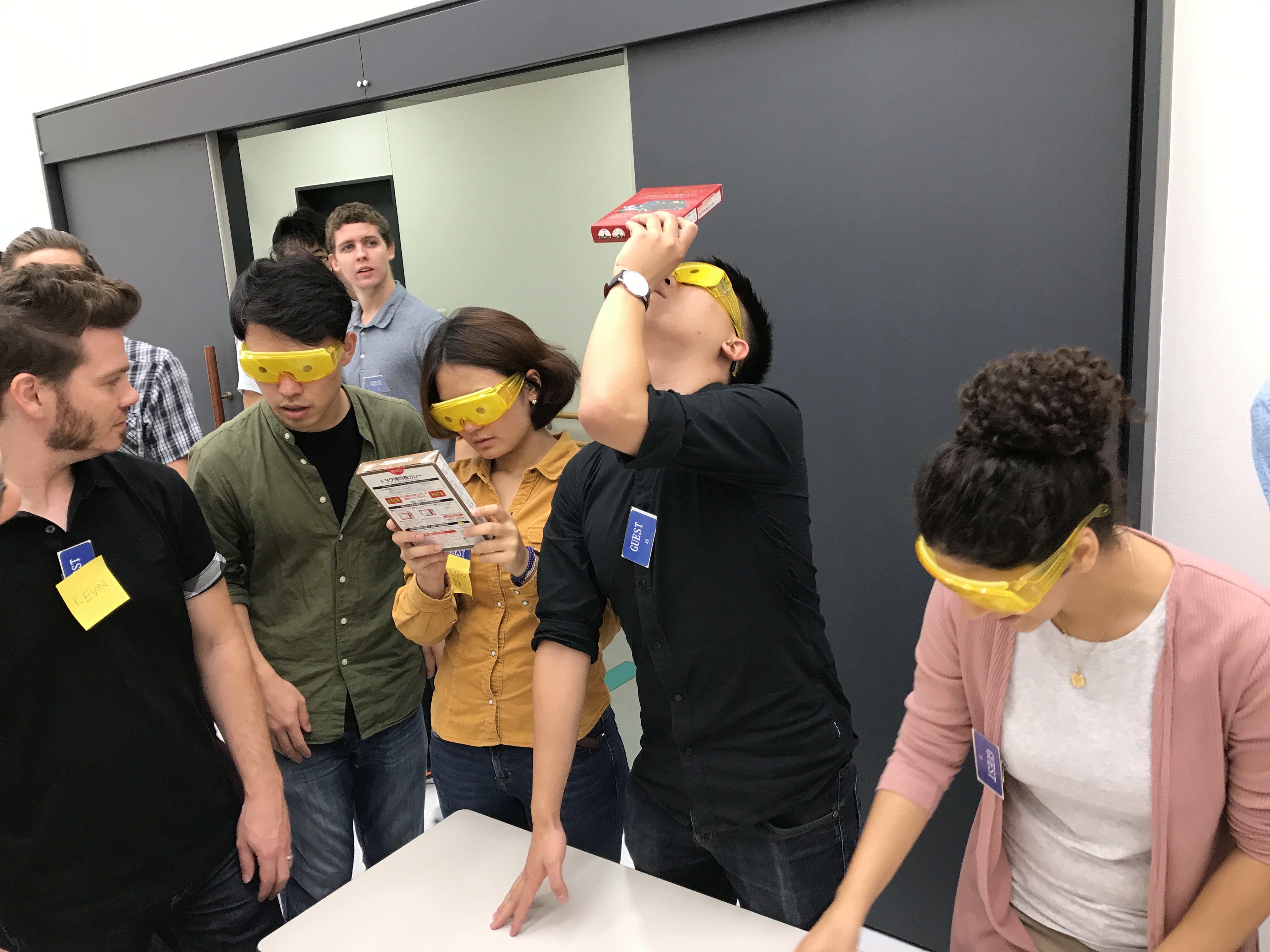ASU professor teaches students empathy as a path to beautiful universal design

Thirty years ago this month, President George H. W. Bush signed the Americans with Disabilities Act into law, creating protections in employment, housing, health care and access for millions of people.
One of the most obvious results of the law is accessible building design — curb cuts, automatic doors and ramps.
But truly universal design, sometimes called “inclusive design,” is much more than that. It’s a design concept that makes everything as easy as possible for anyone, and includes products from smartphones to flexible drinking straws. The concept means that design that accommodates one group actually makes it easier for everyone. For example, curb cuts meant to help people who use wheelchairs also make it easier for people with strollers or wheeled suitcases.
John Takamura, an associate professor of industrial design in The Design School at Arizona State University, teaches universal design in a studio class to graduate students. He had a career designing electronics and consumer goods before coming to the Herberger Institute for Design and the Arts.
Takamura answered some questions from ASU Now.
Question: What is universal design?
Answer: Universal design really originated with Ronald Mace, a person with a disability who coined the term. He was a design thinker and he defined universal design as something to be used by all people to the greatest extent possible without the need for adaptation or specialized design.
John Takamura, an associate professor of industrial design, teaches universal design.
He wasn’t talking about design just for people with disabilities, like himself. He was thinking about short people and tall people and pregnant women and people with arthritis. It’s all the limitations that people face.
How we teach in my studio at The Design School is we look at the needs of people like Ronald Mace in a wheelchair and we incorporate their needs without sacrificing the needs of everyone else.
It’s a lofty goal, and it’s difficult to consider everybody’s needs into one design.
It’s the challenge we face not just as designers but as people using products. If I design them well, I have confidence that I will use them when I’m 85 and have other levels of ability.
It’s the anniversary of the Americans with Disabilities Act and it’s wonderful that we have that, but it’s the most minimal attempt that our government has required. Universal design goes way, way beyond the ADA. It’s not just about ramps and larger elevator doors. It’s everything we use.
Q: How do you teach students about universal design?
A: Each student can select their topic for the semester to design an object or a space or a system. The requirement is not just to design it for the 50th percentile, what we would deem the “average” person. There is no “average” person. That’s just hitting the middle mark and hoping to hit as many people as you can. The challenge is to not do that.
We want to incorporate use for the 95th or fifth percentile, without sacrificing for the 50th percentile.
So I’ve had students work on how to design a better packaging system that incorporates the needs of people with autism, or to see if they can make a better kitchen product for people who have low or no vision.
The premise of universal design is that if something is designed for someone will low vision, it will be easier for me to use as well.
The students quickly realize that they can’t just design for themselves. They have to think of other perspectives, and cognitive or physical challenges in the context of the product, whether for the kitchen or bathroom or electronic or sporting goods that allow people to do things they wouldn’t normally be able to do.
The skill set they need is empathy.
Q: How do you help them find empathy?
A: Oftentimes, I’ll ask a student to spend a day in a wheelchair, which we have at The Design School. When they do that, they come back with a completely different vision. They say, “I didn’t realize how hard it is to get across campus. How do I carry my backpack and/or my laptop?” Then it’s, “Oh wow, now I understand how to design a better backpack.”
Design students wear goggles to simulate low vision as they learn about universal design. Photo courtesy of John Takamura.
We do a lot of simulation. We simulate low vision. I ask students to put on special goggles for a day or so on the weekend and spend the day doing all things they normally do with those goggles.
They also can wear really thick gloves and then try to cook to simulate what limited hand function feels like. It’s, “How can I make this coffee maker better for someone with low function in their hands?”
Q: Do they see examples of universal design?
A: Every fall I take my studio to Japan for 10 days. Japan is really advanced in universal design because they have an aging population. They have a lot more elders than we do in the United States. Because of that, the government and companies are forced to really think about if the majority of the people in the country have these levels of ability, we have to look at our buildings and products. Large Japanese corporations have universal design departments that look at these issues.
So the students engage with those companies that have these universal design departments and talk to their experts and have workshops. We won't be able to do that this year.
Q: What are some examples of products with beautiful universal design?
A: One really good example we always use is OXO Good Grips. The origins of OXO Good Grips was designed to be universal and it was one of the first documented universal design products in the U.S.
It started with an entrepreneur who wanted to design a better kitchen peeler because his wife loved to cook and she had arthritis. He saw her suffering. He enlisted Smart Design consultants and together they developed the OXO Good Grips peeler. Then there was a whole line of kitchen products with that in mind.
I’ve been lucky to have a mentor who was part of that Smart Design OXO group who worked in research and development. Patricia Moore is a design researcher and expert in universal design who lives in Phoenix and has been very active in participating with the Design School. I’ve asked her to come in as a guest lecturer to my studio.
Many examples from Japan are not globally well known. When people use box cutter knives, they have to have a strong hand and be dexterous. This company developed a knife that is more like a mouse for a computer. It has a track ball with a tiny knife in it and you don’t need much hand strength to run it along a piece of paper. The interesting thing is that it can do all these intricate curves that you couldn’t do with a box cutter. So it’s completely redesigning something, not just adding a piece of plastic to the handle to make it easier to use. It’s reconceiving the concept of cutting paper.
Then there are these little examples, like thumb tacks. One Japanese company created a ring of silicone around the needle part that creates a shield so you won’t step on the tack because it lays on its side.
Q: Is it all about function?
A: One of the things we also learn in Japan is this term “Utsukushisa,” which, roughly translated, means “the experience of beauty.” Universal design makes products that function, but they don’t have to look like something that was prescribed by a doctor. They can be cool and beautiful.
It’s a Japanese perspective but it’s meaningful because you’re designing things that people want to use. Aesthetics is part of universal design.
Top photo from Pixabay
More Arts, humanities and education

From ASU to the open road: Alumna Gabriella Shead builds a career behind the scenes of Broadway tours
For ASU alumna Gabriella Shead, a career in the theater isn’t about taking center stage — it’s about making sure everything behind the curtain runs seamlessly. Now serving as assistant company…
Canon brings ‘Star Wars’ cinematographer to inspire Poitier Film School students
David Klein never had a mentor.He was scrappy — and lucky — enough to succeed without one as a career cinematographer. His first feature film was the no-frills, DIY darling of ‘90s indie cinema…

Illuminating the season: How a business professor turns holiday lights into lessons on creativity and sustainability
On a December night in Chandler, Arizona, Kevin Dooley’s house doesn’t just twinkle. It beams like a beacon at the end of the cul-de-sac as the windows shimmer with color, and every corner…

